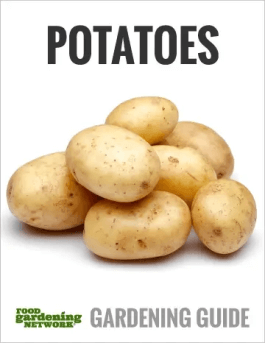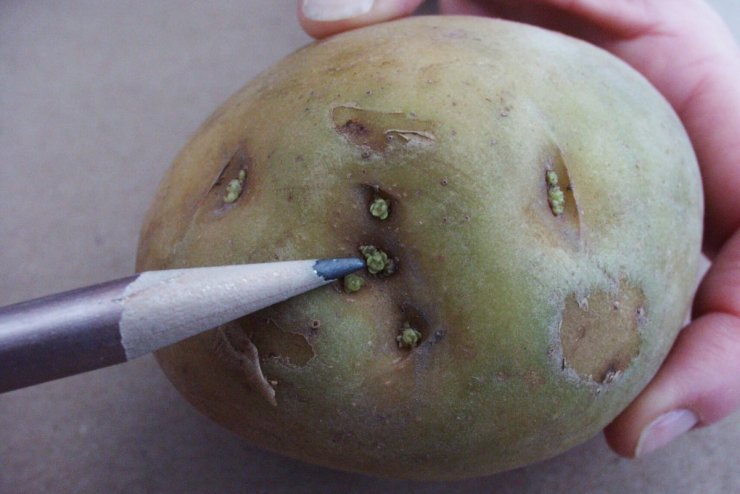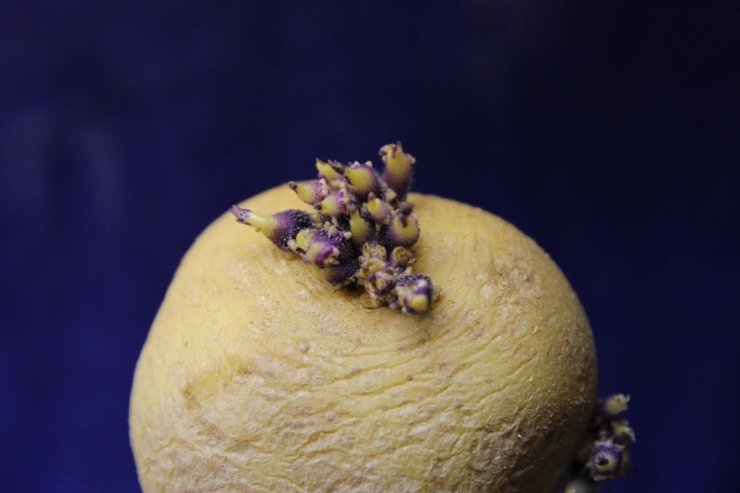
No one wants to waste food, especially when that food is something you’ve spent so much time growing in your garden. After months of soil preparation, weeding, composting, planting, weeding, staking, transplanting, weeding, watering, and still more weeding, you want to enjoy the literal fruits and vegetables of your labor.
Many of us gardeners are more than happy to ignore a blemish or two if it means we can eat fresh produce tended by our own hands. But some things you can’t overlook. One of those things is your potatoes turning green.
Yes, I know. Get enough varieties of potatoes together, and you’ve got an array of brilliant hues. But green should not be one of those colors.

Image courtesy of Perdue University.
What’s so bad about green?
Green in plants is thanks to the presence of chlorophyll. Chlorophyll is a primary part of photosynthesis, which, if you recall from biology class, is pretty much alchemy as far as I can tell. While plants aren’t turning sunlight into gold, they are turning sunlight into sugars that they use to grow and produce.
Chlorophyll is perfectly fine, and we eat it all the time. It’s in the leafy greens we use for salads and the broccoli we enjoy in a stir fry. You can even buy chlorophyll supplements.
Potatoes turning green just means they have chlorophyll that’s gathering sunlight and starting the process of photosynthesis. Up to this point, we’re good.
But …
Photosynthesis isn’t the only thing going on when you see potatoes turning green. Potatoes exposed to light also produce solanine.
Solanine is a bitter-tasting toxin that can cause severe reactions, such as:
- upset stomach
- abdominal pain
- nausea
- vomiting
- diarrhea
- headache
- hallucinations
- coma
Of course, it’s unlikely that a tiny spot of green on a potato would cause you to experience hallucinations or fall into a coma. However, I don’t know anyone who is fond of abdominal pain or vomiting, so it’s best to steer clear of potatoes turning green. Incidentally, this is the same reason it’s important to cut away the eyes before you cook potatoes.
That said, if it’s just a small part, you can cut away any green, and the rest of the potato is edible. If it’s more than just a small spot or if you’re feeding children, send the potato to the trash.

Just say no to potatoes turning green
To prevent the issue of potatoes turning green, it’s important to pay attention to how you’re growing and storing them.
While they’re still in the garden, you’re going to begin the process of hilling once your potato plants emerge from the soil. You can use soil, mulch, straw, or wood chips—the goal here is to make sure you protect the growing tubers from sunlight. Sunlight is essential for the stem and leaves of the potato plant, but potentially devastating for the tender tuber. And as we now know, that pretty much ruins any chance that potato has of becoming home fries or potato pancakes.
As your potato plant grows, continue to hill up the soil around the base of the plant. This will keep moisture near the plant and will protect the tubers from sunlight.
Once you’ve harvested your home-grown spuds, you need to put them into storage to cure; this is where the skin has time to set. You need a dark space with high humidity and a temperature between 50 to 60 degrees F. This could be a cooler part of your house, such as a utility room with a portable humidifier or your basement. But if those aren’t options, just do the best you can. A kitchen cabinet or an unused closet could also work. Just be sure to keep them out of the sunlight.
After their two-week curing time, the potatoes are ready to head into long-term storage (late-season varieties do best in long-term storage). Put them in burlap bags or slotted bins to allow for airflow. Store them in a dark space at a temperature of 40 degrees F.
Then when you’re ready, you’ll have a stash of homegrown potatoes waiting for you. Roast them, bake them, boil and mash them, fry them, or air fry them. There are so many ways to enjoy potatoes.
If you liked this article on Potatoes, we have a whole gardening guide on Potatoes that you will love. Check out How to Grow Potatoes: Everything About Growing and Enjoying Spuds. Learn about the different types of potatoes, how to plant and tend to them, what to do about common potato pests and diseases, and how to cure and store potatoes, plus get several mouth-watering, delicious recipes.


 Previous
Previous
